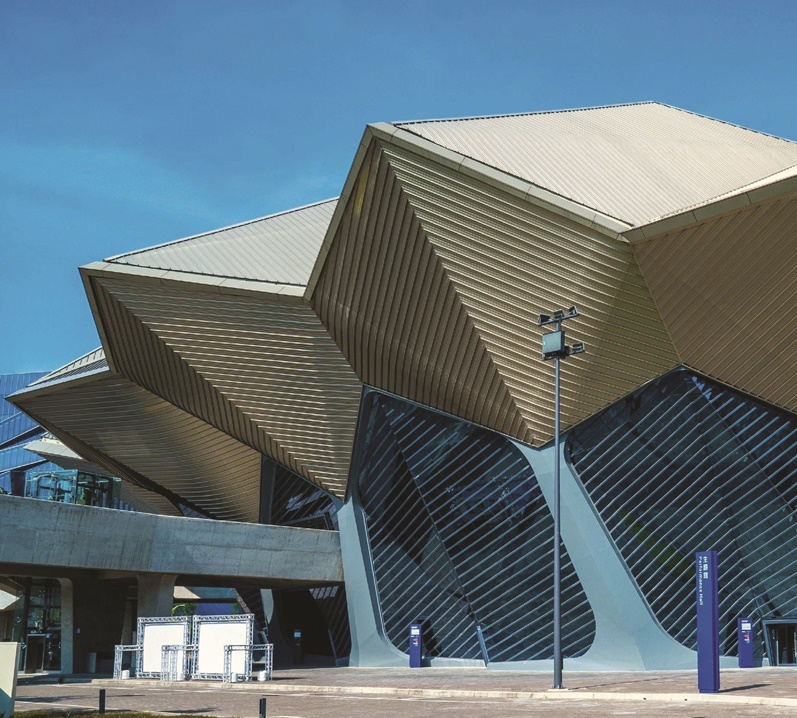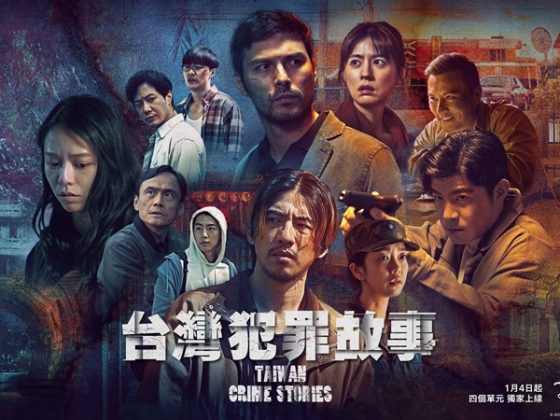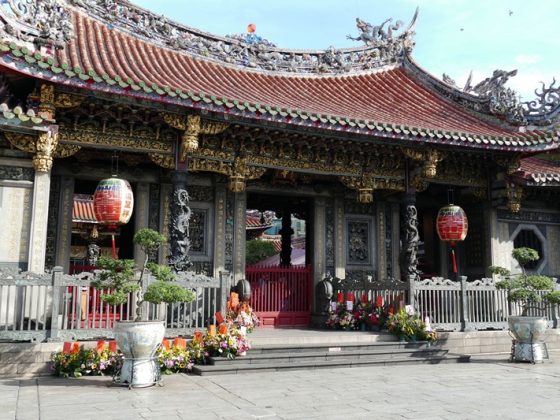Author Jenna Lynn Cody
Photographer Dharma Drum Mountain Cultural and Educational Foundation, Taipei Performing Arts Center, Taipei Music Center, Yuskay Huang, Chris Stowers, Shao Bo Zhao
When describing Taipei’s architectural gems, the focus usually rests on ornate temples or Japanese-era buildings. What many don’t realize is that modern architecture also has a place in the city’s aesthetic landscape.
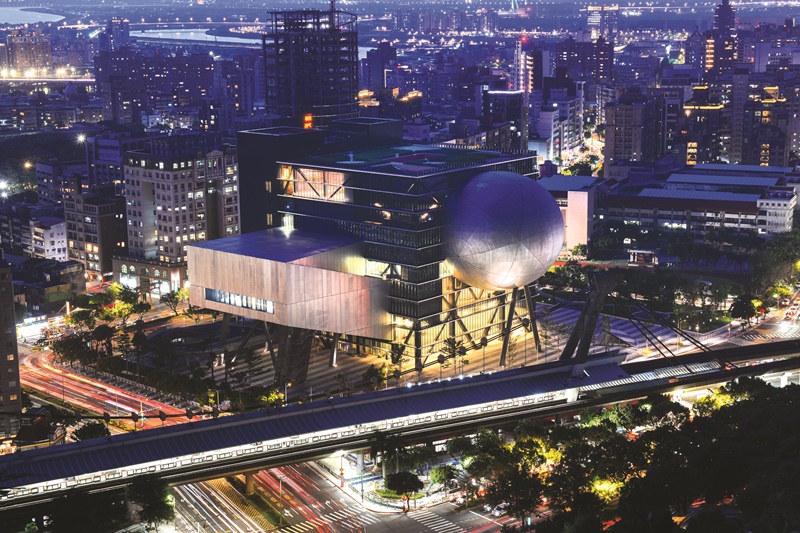
In this regard, Nung Chan Monastery is a mid-century oasis steeped in minimalist clean lines. National Taiwan Normal University Art Museum challenges visitors to think about the juxtaposition of old and new in Taipei neighborhoods. The Taipei Performing Arts Center re-envisions what theater means to both artists and the public, just as the Taipei Music Center weaves itself into the rhythm of city life through an interconnected series of structures that evoke both geological forms and futuristic spacecraft.
The construction of these architectural marvels spans the mid-twentieth century to the past two years. All, however, were built with an eye for both balance and asymmetry. They embody design principles which respect functionality while also looking beyond it to explore what it means to evoke emotion, create art, include the public and co-exist in an urban landscape. Taken together, they present opportunities to look beyond traditional design and find the contemporary heart of Taipei.
Nung Chan Monastery 農禪寺
🚊MRT Qiyan Station
Taking the MRT to Qiyan Station (捷運奇岩站) and walking about 10 minutes, you will find a mid-century architectural treasure down a quiet lane in Beitou (北投) with a commanding view of Yangmingshan (陽明山, Yangming Mountain). The number of people strolling down an otherwise unremarkable side road is your first clue that there’s something special here. Walk to the end and you’ll find yourself at Nung Chan Monastery, a minimalist modern dream designed by renowned architect Kris Yao (姚仁喜).
Yao is also known for designing the Southern Branch of the National Palace Museum (國立故宮博物院南部院區) and the Museum of Archaeology, Tainan Branch of the National Museum of Prehistory (國立台灣史前文化博物館南科考古館), among other well-known structures.
Nung Chan Monastery was founded as a simple farmhouse in 1975 by Venerable Master Dongchu (東初), a Buddhist monk and scholar. His successor, Venerable Master Sheng Yen (聖嚴), oversaw the expansion of the monastery to its current form, as well as founding Dharma Drum Mountain (法鼓山) in New Taipei City (新北市).
Upon entering, the arrangement of buildings between the mountains on one side and the Water-Moon Dharma Center (水月道場) on the other invites a sense of mindful calm. The edifices, with white and gray as the main tone, bring visitors peace of mind. Clean lines and thoughtfully balanced asymmetry complement the other unique features of the monastery.
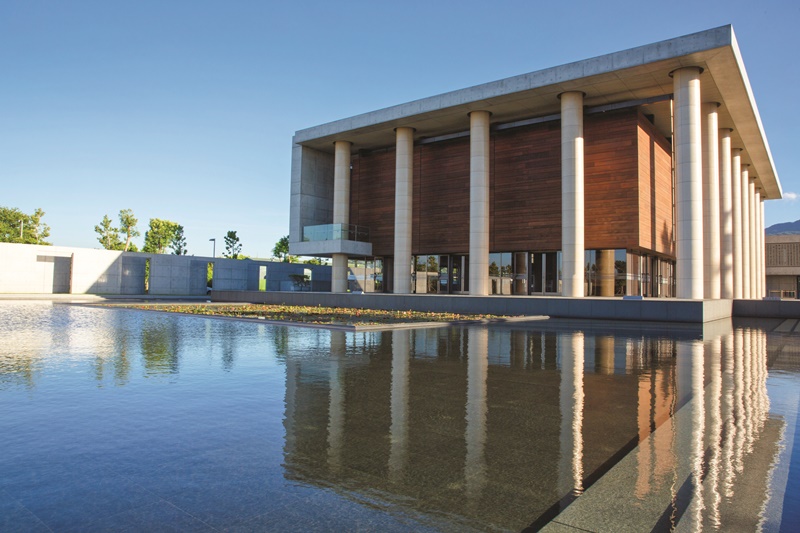
The Main Buddha Hall is dotted with small crystal Buddhas on one side. On the other, the Heart Sutra is cut into the second-story wall, allowing sunlight to pour in through the sacred words.
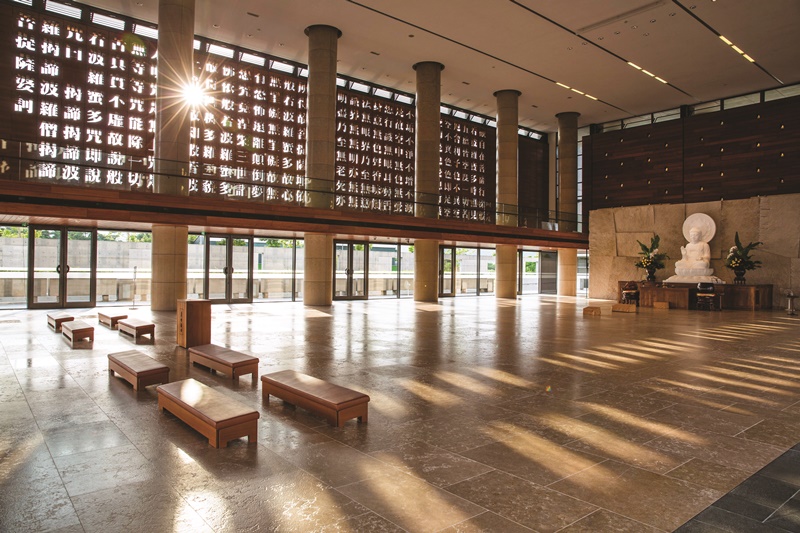
Buddhist statuary-dotted gardens invite peaceful strolling, and the connection corridor, constructed of alternating wall slabs with blank space, is meant to evoke the contrast between the solid and empty, the bright and dark. The pools, gardens and corridor provide pared-down spaces for quiet contemplation. Although the site is near a busy highway, it feels like a world apart.
National Taiwan Normal University Art Museum 國立台灣師範大學美術館
🚊MRT Guting Station
The campus of National Taiwan Normal University (NTNU) has long been known for its architecture. The original campus on the south side of Heping East Road (和平東路) was built in the Japanese era and contains examples of Japanese Baroque and early twentieth century buildings. The more contemporary campus across the road, however, contains the most notable example of modern architecture.
Tucked away from bustling Heping East Road, the NTNU Art Museum is accessible through the campus entrance or the leafy lanes that border the university buildings. The easiest approach is via Lane 33, Lishui Street (麗水街33巷). Trees, benches, cafe-dotted streets and the quiet scholarly atmosphere of the campus add to the calm.
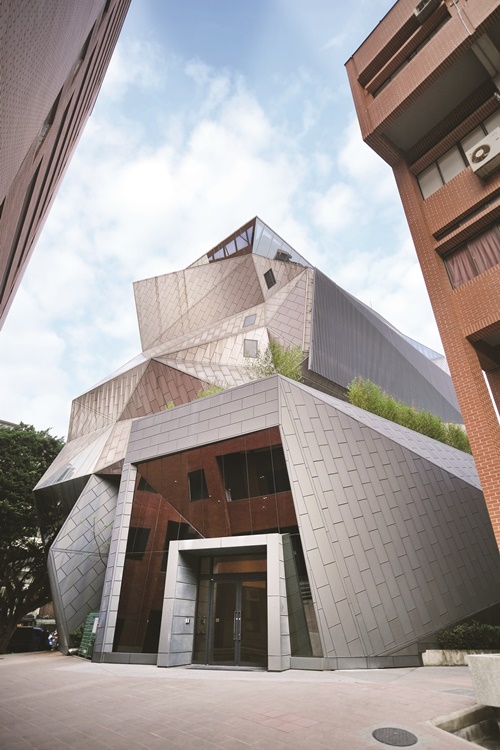
The museum is an agglomeration of pyramidal metal spikes, resembling a futuristic alien spaceship or perhaps an origami beehive. The façade is impressive in itself, marked by its contrast to the older architecture of the area, some of which dates back to the Japanese era. Its presence may be understood as a symbol of disruption: as modern art disrupts traditional notions of beauty, the angular titanium façade draws attention not only to its newness, but to the vintage character of the neighborhood.
There is no angle from which the entire structure can be seen. Rather, different angles and perspectives come into view as one strolls the perimeter. The museum’s architect, Chen Shenzhong (陳聖中), has said he envisions architecture “Like a poem, and the city like a book. If the book is full of poems, the city will have culture.” Like a poem, one might say that the museum’s edifice changes depending on the angle or even perhaps the time of day, with myriad unexpected or surprising nooks and corners.
Exhibits at the museum focus on Taiwanese contemporary art, with a particular focus on collecting student and faculty works since 1947. It houses over 3,000 works encompassing oil, ink and watercolor paintings, calligraphy, prints and applied art. In this way it fills an important niche in Taiwan’s art scene, providing insight into the history and evolution of contemporary art in Taiwan and encouraging civic learning and participation in Taiwan’s art history. The museum’s Facebook page regularly promotes courses and symposia, emphasizing its existence as a public venue for all rather than a private, rarefied art collection.
Taipei Performing Arts Center 台北表演藝術中心
🚊MRT Jiantan Station
As the MRT’s red line snakes northward, it heads above ground and allows passengers to enjoy Taipei’s urban scenery. After passing the traditional Chinese-style architecture of the Grand Hotel (圓山大飯店), a much more contemporary building comes into view: the Taipei Performing Arts Center. The center was designed by world-famous Dutch architects Rem Koolhaas and David Gianotten of Office for Metropolitan Architecture (OMA), known for the Seattle Central Library, De Rotterdam, and the Torre Bicentenario in Mexico City.
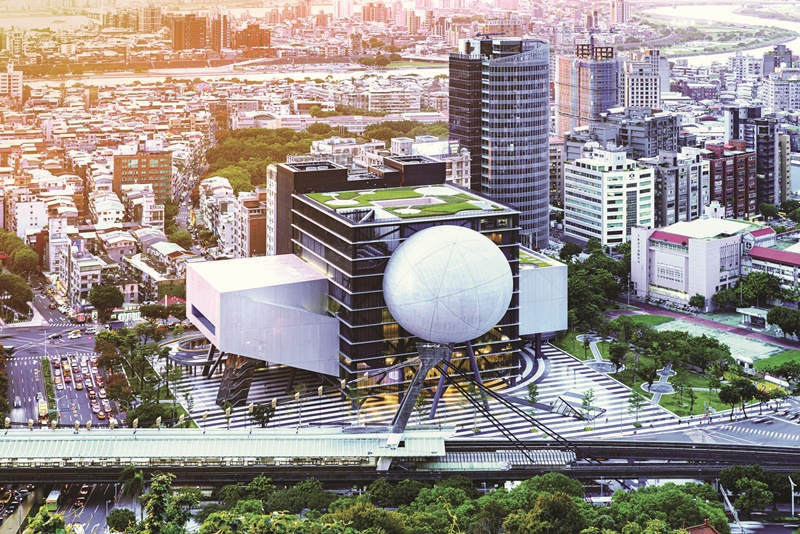
The Taipei Performing Arts Center was completed in 2021, and is thus the newest entry among Taipei’s modern architectural offerings. It was designed with the concepts of inclusivity and upending the “conservative internal workings” of arts venues in mind, and was featured among CNN’s Transformative Buildings Set to Shape the World in 2021.
The center stands out from the older surrounding buildings and well-known Shilin Night Market (士林夜市), creating a strong visual impact as you approach, especially from the south. A huge globe — locally nicknamed “the pork ball” — juts out from the main building, hanging over a large outdoor public plaza and covered indoor plaza. The second floor features wave-shaped windows that provide a view of the MRT and nearby market streets, with public seating and a small reading area. The seventh floor features the popular ACME Cafe Bar & Restaurant, which serves high-end Western food, cafe standards and drinks, with an expansive view of the Shilin area.
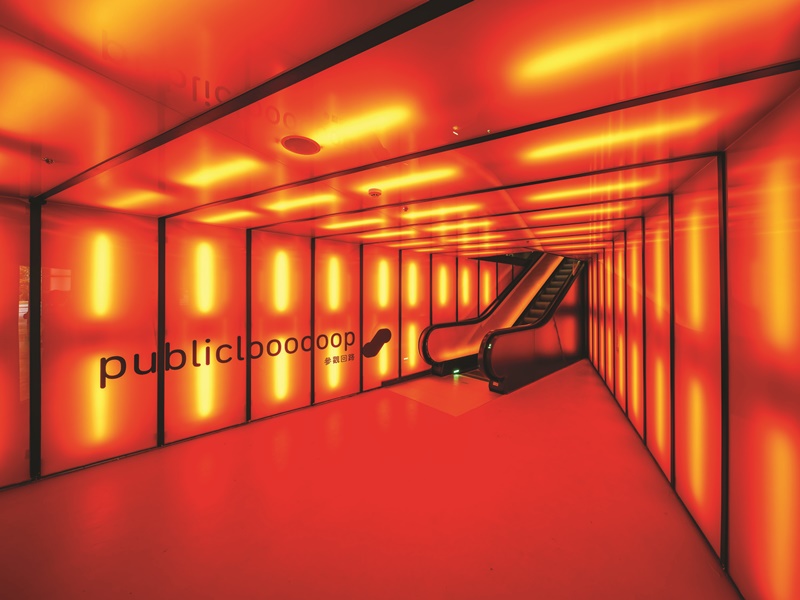
The Taipei Performing Arts Center is indeed unique: it features three independent theaters which all connect to a common backstage area. The aptly-named Globe Playhouse (球劇場) is easily the most recognizable, as it is located within the globe-like structure. The rectangular Grand Theatre (大劇院) juts out to one side, and the center also contains a smaller Blue Box (藍盒子) theater. The backstage itself is visible through The Public Loop, which allows visitors to see aspects of the performing arts which are typically hidden.
Taipei Music Center 台北流行音樂中心
🚊MRT Nangang Station
When one thinks of modern architecture in Taipei, Nangang (南港) is typically not the first neighborhood that comes to mind. Known primarily as the site of the massive Taipei Nangang Exhibition Center (台北南港展覽館) and a small forest of office buildings, it was an unlikely site for a prominent new development project, let alone a performing arts center. That changed when Taipei City Government (台北市政府) held a design contest for several new projects, including the Taipei Performing Arts Center in Shilin and the Taipei Music Center in Nangang.
The completed complex in Nangang was designed by New York-based architects Jesse Reiser and Nanako Umemoto, also known for the Kaohsiung Port Cruise Terminal (高雄港旅運中心), and the tourist walkways on Alishan (阿里山) in Nantou County (南投縣). At first glance, it evokes a sleek space station straddling Civic Boulevard (市民大道), with plazas and walkways connecting multiple buildings across a wide swath of land. The architects themselves describe the Taipei Music Center as inspired by “flowing crystalline geometry,” a visualization that makes immediate sense whether viewing the edifices glittering in the sunlight or lit up at night.
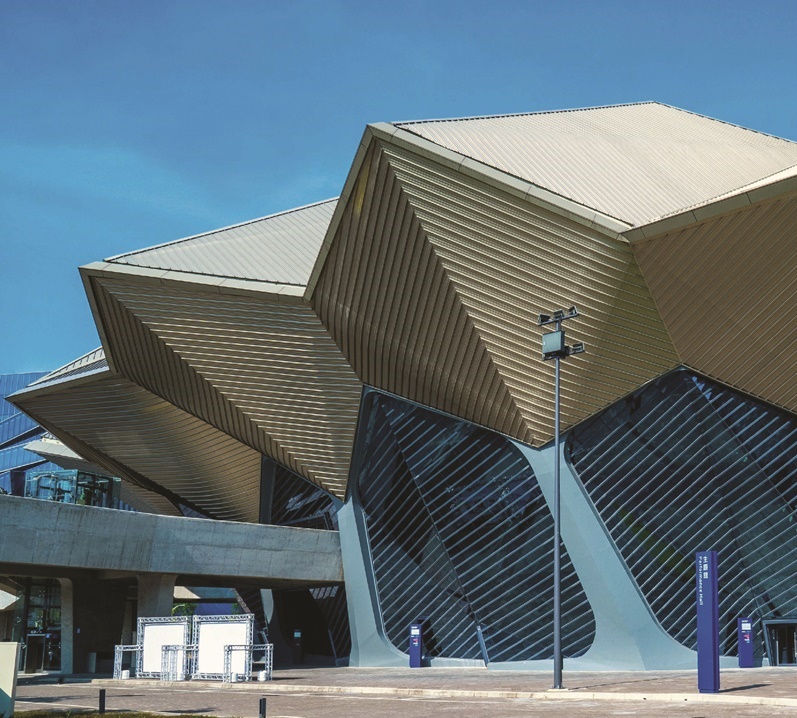
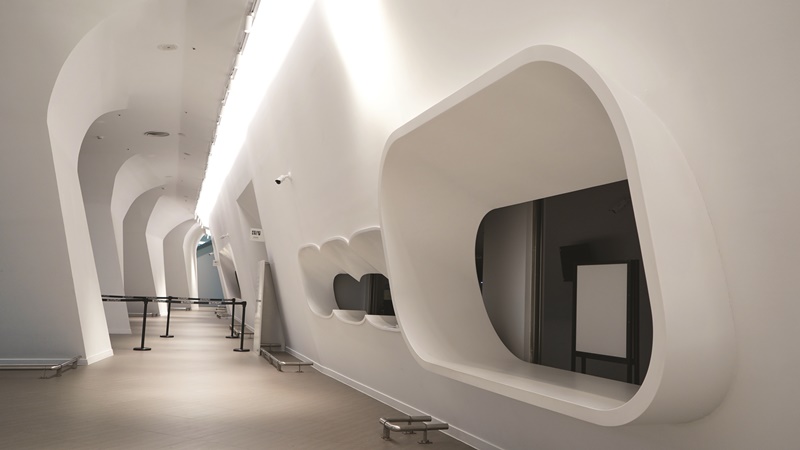
Although the intention was to embrace artificiality rather than imitate natural formations, one might look at the Concert Hall (表演廳) and see an almost alien-like scalloped shell, or gaze at the Creative Hub (產業區), which resembles an oblong quartz crystal, or note how the Cultural Cube (文化館) evokes naturally squared-off pyrite. As a whole, Taipei Music Center’s look is at once natural and artificial, unique and universal, not unlike the music it seeks to promote: both internationally recognizable yet with unmistakably local roots.
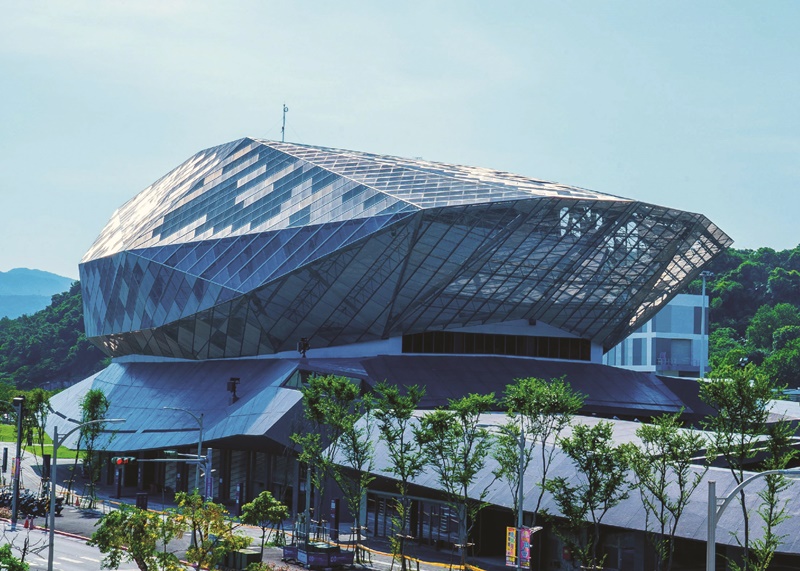
The purpose of the Taipei Music Center is manifold. The Concert Hall is a performance venue seating 5,000, the Cultural Cube presents exhibits on the history of music in Taiwan, and the Creative Hub acts as an incubation space for young and up-and-coming musical talent.
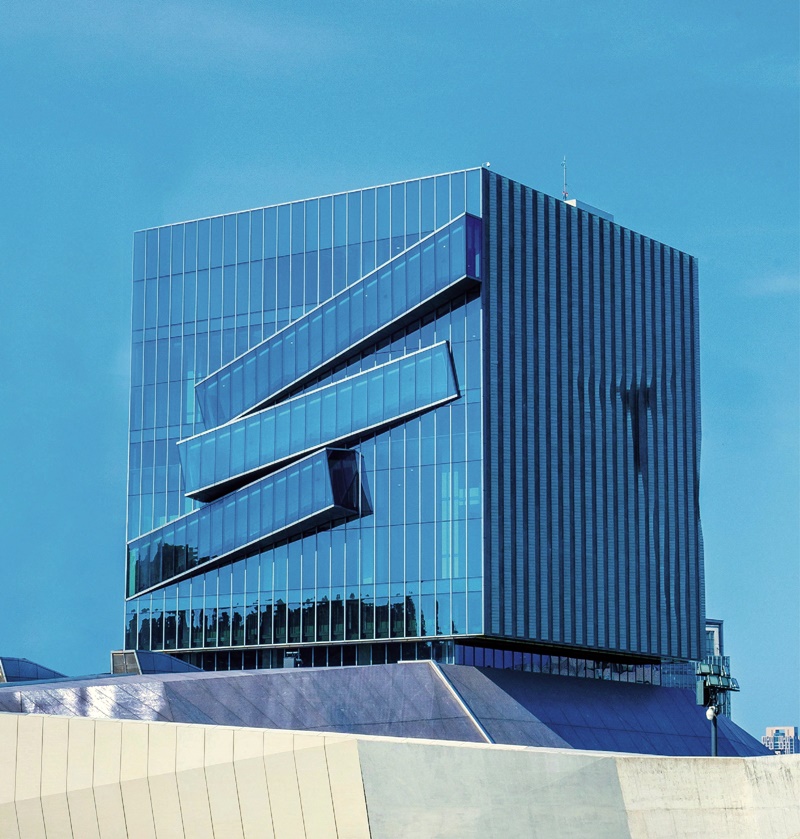
The center’s design is intended to be woven into the fabric of Taipei City life. Beyond its role as a music venue, it is also home to cafes and arts-focused shops, including a DJ supply store, a vinyl record shop and several purveyors of musical instruments. Its bridges and plazas are meant to be welcoming to all, positioning Taipei Music Center as not only a site for the local music scene to thrive, but to convey the distinctiveness of Taiwanese music to the world.
This article is reproduced under the permission of TAIPEI. Original content can be found on the website of Taipei Travel Net (www.travel.taipei/en).

